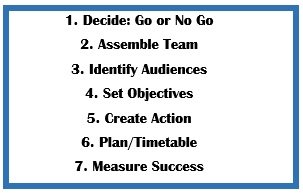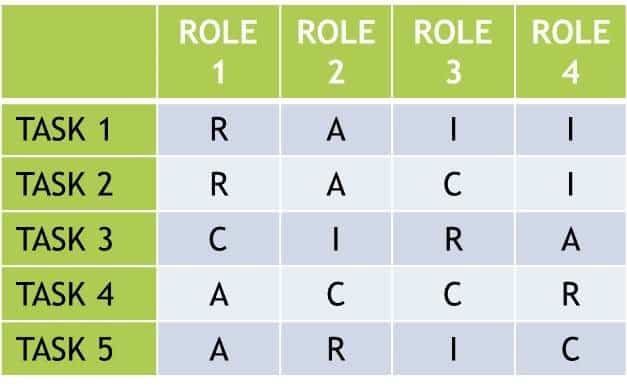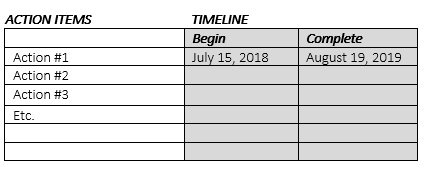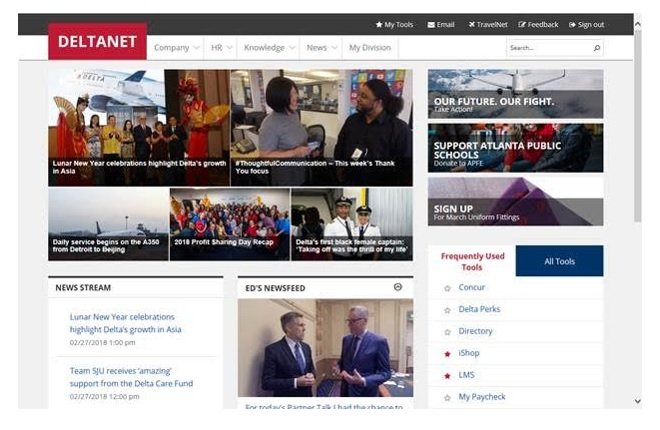HOW TO BUILD A SUCCESSFUL INTRANET
July 5, 2018
You and your company have already made the decision. This is your intranet vision: a dynamic, collaborative experience that is

Possible? One-hundred percent. It’s been successfully achieved by countless organizations. But one thing they all agree on—whether you’re a big company with thousands of employees worldwide, or a small company with a few offices scattered across the state—is that embarking on Project Intranet is not to be done lightly. So, let’s get started.
Strategic Planning for an Intranet

1. Decide: Go or No Go
On the Plus Side for Project Intranet
Is an intranet a foregone conclusion? Maybe not, but connecting with employees is. The Deloitte University Press in its 2017 Deloitte Global Human Capital Trends listed employee experience as a central theme and a primary challenge for human resources departments across the country. And for companies eager to help employees engage with company culture, intranets are the obvious channel.
- TIP: Millennials in particular are looking for ways to connect as employees. Values matter and they report wanting to have a sense of purpose in the workplace and greater insight into company goals.
More Pluses: Standard but Sooo So Satisfying
When basic information, standard to every company, becomes easily available with a minimum of hassle, everyone breathes a sigh of relief.
- HR materials
- Benefits forms
- Training manuals
- Insurance forms
Even More Pluses
- Cost savings (if the new intranet solution is cheaper than old communication hardware and software)
- Higher productivity from employees who feel more engaged
- Higher earnings as a result of higher productivity
- Better knowledge management
- Better corporate security
On the Minus Side for Project Intranet
But before you become too accustomed to those rose-colored glasses, take a hard look at the less pleasant realities.
1. Cost of software and hardware
2. Cost of labor at outset and ongoing
- Teams from each department must be trained to contribute content and staff must understand all the technical aspects of the intranet. Without effective training, implementation can actually hinder the employees’ ability to perform well.
- Routine maintenance is a must and is another aspect that consumes time.
- There must be intranet overseers who are constantly on guard for the uploading of excessive information that causes confusion. If navigation and organization of the intranet is affected, productivity can be impacted.
- Even out-of-the-box software solutions are never truly complete and will need some customizing.
And as an extra incentive to do things right, take a squint at Blogger Deb Lavoy’s little survey called, “Why I Hate my Intranet”. Most answers circled around lack of usability and irrelevance but there were others:

Some responses were more colorful, one referencing the movie, Independence Day. “The president asks the captured alien, ‘What is it that you want us to do?’ The alien answers, ‘Die!’ That’s how I feel about Intranets. And I’d be willing to wage intergalactic warfare for the cause.”

Rose-colored glasses off but still ready for Project Intranet? We thought so! On to the all-important human element: your team.
2. Assemble Team
Corporate entities that will probably be involved in the team include:
- IT
- Communications
- HR
- Training
- End-users
- System administrators
- Intranet champions
- Departments that will have content represented
If at all possible, schedule a day to go through the project goals and timelines. To help people understand their individual roles, consider using a RACI responsibility assignment matrix, which assigns each team member to being Responsible, Accountable, Consulted, or Informed for each task.

Source: http://easyprojecthub.com/raci-explained-pros-cons/
It will be important for potential team members to have a clear idea of what the commitment means in terms of time and labor.
3. Identify Audiences
‘Know thy audience’ is the cornerstone of every good communications campaign. And lest we forget, an intranet is just another communications channel.
Companies often do employee surveys prior to setting up a major communications channel such as an intranet; others feel they have a good grip on end-user wants and needs. It’s important to have team members – such as end-users – who can represent those wants and needs truthfully in order to create an intranet that will be widely used.
What you find my surprise you.
In his article, “The Design Process: How to Redesign Your Intranet”, Toby Ward noted that “Not all of your intranet users will have the same needs. This means that the employee from Santa Monica will look for different resources than the one in Atlanta. Similarly, the associate from Communications will need different information, tools, and forms than the one from Sales. Also, not to be overlooked are the ways these different user audience types may wish to interact with content, and with one another. It is highly unlikely that your Millennials will wish to consume and communicate information in the same ways that some of your more seasoned employees do. So, analyzing your people becomes a fantastic place to begin your redesign journey.”
By knowing your audience well, you can be specific about your objectives and how to prioritize them.
Knowing your audience also enables you to create a user experience that matches your company culture. To the left are examples of two prize-winning intranets that couldn’t be more different, but were equally effective in representing their organizations.
The Fred Hollows Foundation of New Zealand, a non-profit devoted to treating and preventing blindness, focused on gorgeous, moving photographs and an easy-to-use format that would inspire its workers throughout the world.
The Hulu Intranet, its users fondly dubbed Hulugans, was built with Igloo software and has a rowdy feel that invites its users in and celebrates its entertainment roots. It was voted one of the year’s best in 2016 by Intranet authority Neilson Norman Group.
4. Set Objectives
There are several different players with skin in this game so there are going to be diverse objectives to meet. They might go something like this:
- Corporate Objectives: insight into corporate values and goals
- Departmental Objectives: dissemination of essential materials
- Management Objectives: motivational tools
- Employee Objectives: social and interactive features
- C-level Objectives: announcements/information
Or it might go nothing like that. It’s your intranet reflecting your priorities.
5. Create Action Plan and Timetable
Now that specific objectives are in place for Project Intranet, your team will create an action plan, consisting of ‘tactics’ to bring your goals to fruition. At the same time, you will begin to think about your timetable.
Actions
The action plan for every intranet project differs according to objectives and priorities, but the basics might go something like this:
- complete decisions about and design of key content features
- create features drafts and submit for end-user review
- acquire hardware and software as required
- migrate content
- develop a training manual
- plan for performance measurement
- plan for launch
- training for content providers end end-users
- implement login for employees
- execute internal marketing plan
- launch
Some of these decisions, will be made departmentally. Other decisions will be made as a team.
Timeline
According to the Nielsen Norman Group in January of 2018, Intranet development timelines are getting shorter. “This year’s average of 14 months (or 1.2 years) is the shortest yet for our Intranet Design Annual winners,” said authors Kara Pernice, Amy Schade, and Patty Caya in The 10 Best Intranets of 2018.
Even though better Website development tools and out-of-the-box solutions are making the process faster, as with every major project, time is money. Every contributor to Project Intranet will depend on every other contributor to bring in his or her portion on time. So, a solid timeline, constantly updated, is a tool to live by.

5. Measuring Success
Yea! Launch day with all its festivities has come and gone and colleagues in the hall (and digitally of course) are high-fiving you all over the place. Your ‘likes’ are off the chart. But that doesn’t let you off the hook for constantly measuring the success of your creation.
Stakeholders in Project Intranet will be eager to celebrate with you but they will also be waiting for the kind of metrics that show you have met your objectives. Remember that showing how things have improved is only possible if you can show how they were before you began. So be sure you have the before statistics as well as the after statistics.
Knowing the right mix of metrics and anecdotal information to give an accurate picture of your success is tricky, according to the experts. But it’s not one you can afford to ignore. Future investment in Project Intranet and/or the inevitable improvements depend on accurate feedback. So a strong and very complete plan for what works and what doesn’t work is essential. As well as built-in strategies for how to act on new information. In that way, measuring gives real value, not just useless statistics.
In Conclusion
Building an intranet for your company is an undeniable challenge, but the rewards loom large. Done right, your intranet can demonstrate some of today’s best ways to communicate. Mr. Gates said it all:
“I’m a great believer that any tool that enhances communication has profound effects in terms of how people can learn from each other, and how they can achieve the kind of freedoms that they’re interested in. Bill Gates
A Delta Case Study
































